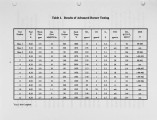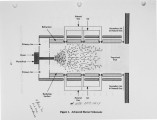| Title |
A Low-NOx High-DRE Burner for Co-firing Liquid Waste with Natural Gas |
| Creator |
Stapper, Blake E.; Nelson, Thomas P.; Bell, Ronald D.; Barone, S. Peter |
| Publisher |
University of Utah |
| Date |
1995 |
| Spatial Coverage |
presented at Monterey, California |
| Abstract |
The regulatory pressures aimed at providing a clean environment are leading to stringent emission requirements for operators of combustion equipment. In some applications, such as waste liquid incineration, the purpose of the regulations are at odds with each other. For instance, the higher flame temperatures that are required to achieve high destruction efficiency generally produce NOx emissions that are significantly higher than baseline. To address this problem, the Gas Research Institute has, in conjunction with Radian Corporation and Petrocon Technologies, Inc., developed a 10w-NOx, high-destruction efficiency burner for co-firing liquid waste with natural gas. A prototype of the burner, which utilizes a radiant tube to enhance destruction efficiency and fuel/air staging to minimize NOx formation was evaluated at the John Zink test facility in Tulsa, OK. The burner was fired at 25 MMBtuIhr, of which 10 MMBtuIhr was natural gas and 15 MMBtuIhr was a simulated waste fuel oil, spiked with ethylbenzene. A Zink HPS™ dual-fuel burner was tested at the same conditions to provide a baseline for a typical waste-fired burner. The GRI burner demonstrated NOx emissions that were 20 to 30 percent lower than the HPS burner, with a destruction efficiency of the ethylbenzene in excess of 99.99 percent. The purpose of this paper is to document these test results. |
| Type |
Text |
| Format |
application/pdf |
| Language |
eng |
| Rights |
This material may be protected by copyright. Permission required for use in any form. For further information please contact the American Flame Research Committee. |
| Conversion Specifications |
Original scanned with Canon EOS-1Ds Mark II, 16.7 megapixel digital camera and saved as 400 ppi uncompressed TIFF, 16 bit depth. |
| Scanning Technician |
Cliodhna Davis |
| ARK |
ark:/87278/s6bv7k72 |
| Setname |
uu_afrc |
| ID |
8847 |
| Reference URL |
https://collections.lib.utah.edu/ark:/87278/s6bv7k72 |
























